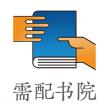
焊接科学与工程专业英语(普通高等教育材料成型及控制工程系列规划教材)【正版新书】
正版新书出版社直发可开发票,支持7天无理由
¥ 38.1 7.9折 ¥ 48 全新
库存4件
江苏无锡
认证卖家担保交易快速发货售后保障
作者编者:吴志生//柏艳红//黎穗琼|责编:彭喜英
出版社化学工业
ISBN9787122154583
出版时间2020-01
装帧其他
开本其他
定价48元
货号30804599
上书时间2024-07-03
- 在售商品 暂无
- 平均发货时间 14小时
- 好评率 暂无
- 最新上架
商品详情
- 品相描述:全新
- 商品描述
-
目录
Chapter 1 Welding Technology Fundamental
1.1 Modern Engineering Structural Material
1.2 Mechanical Property of Metal Material
1.3 Thermophysical Property of Metal Material
1.3.1 Specific Heat
1.3.2 Thermal Expansion
1.3.3 Thermal Conductivity
1.3.4 Melting Point or Melting Range
1.3.5 Thermionic Work Function
1.4 Principal Types of Heat Treatment of Steel
1.5 Arc Physics
1.5.1 Stability of Electric Arc
1.5.2 Stability of AC Arc
Chapter 2 Arc Welding Power Source
2.1 Classification of Power Source
2.1.1 AC Power Supplies
2.1.2 DC power supplies
2.1.3 Inverse Source of Arc Welding
2.2 Electrical Characteristics of Power Source
2.2.1 Constant Voltage
2.2.2 Constant Current
2.2.3 Combined Constant-Current and Constant-Voltage Characteristics
2.3 Selecting and Specifying a Power Source
Chapter 3 Arc Welding Process
3.1 Shielded Metal-Arc Welding
3.2 Gas Shielded-Arc Welding
3.2.1 Specific Advantages of Gas-shielded Arc
3.2.2 Types of Gas-Shielded Arc Processes
3.2.3 Gas Tungsten Arc-Tig
3.2.4 Gas Metal Arc-Mig
3.2.5 CO2 Welding
3.2.6 Pulsed Arc Welding
3.3 Submerged Arc Welding Fundamentals of the process
3.3.1 Definition and general description
3.3.2 Principles of operation
3.4 Plasma Arc Welding
3.4.1 Keyhole Action
3.4.2 Arc Shaping
3.4.3 Operating Data
3.4.4 Applications
3.4.5 Summary
Chapter 4 Other Welding Methods
4.1 Resistance Welding
4.1.1 Introduction
4.1.2 Resistance Spot Welding(RSW)
4.1.3 Projection Welding
4.1.4 Resistance Seam Welding(RSEW)
4.1.5 Upset Butt Welding
4.1.6 Flash Butt Welding
4.2 Friction Stir Welding
4.2.1 Introduction
4.2.2 Principles
4.2.3 Friction Stir Tool
4.2.4 Friction Stirring Imperfections
4.3 Laser Beam Welding
4.3.1 Introduction
4.3.2 Principles
4.3.3 Metals Welded
4.3.4 Machines
4.3.5 Parameters and Technology
4.4 Electron Beam Welding
4.4.1 Introduction
4.4.2 Principles
4.4.3 Variations
4.4.4 Equipment
4.4.5 Safety
Chapter 5 Welding Metallurgy
5.1 Chemical Reactions in Welding
5.1.1 Overview
5.1.2 Gas-Metal Reactions
5.1.3 Slag-Metal Reactions
5.2 Weld Metal Solidification
5.2.1 Epitaxial Growth at Fusion Boundary
5.2.2 Nonepitaxial Growth at Fusion Boundary
5.2.3 Competitive Growth in Bulk Fusion Zone
5.2.4 Effect of Welding Parameters on Grain Structure
5.2.5 Weld Metal Nucleation Mechanisms
5.2.6 Grain Structure Control
5.3 The Microstructure and Properties of Heat-affected Zone
5.3.1 Welding Thermal Cycle
5.3.2 The Microstructure Changes in the HAZ
5.3.3 Hardness Distribution in the HAZ
5.3.4 Welding Cracks in the HAZ
Chapter 6 Weldability of Material
6.1 Weldability of Material and Testing Method
6.1.1 Weldability of Material
6.1.2 Weldability Evaluation and Test Method
6.2 Weldability of low carbon steel
6.2.1 Metallurgy of the liquid weld metal
6.2.2 Solidification and solidification cracking
6.2.3 Stress intensification,embrittlement and cracking of fusion welds below the solidus
6.2.4 Lamellar tearing
6.2.5 Reheat Cracking
6.3 Weldability of Magnesium and Its Alloys
6.3.1 Alloys and Welding Procedures
6.3.2 Oxide Film Removal
6.3.3 Cracking
6.3.4 Mechanical Properties
6.3.5 Corrosion Resistance and Fire Risk
Chapter 7 Residual Stresses,Distortion and Fatigue
7.1 Residual stresses
7.1.1 Development of residual stresses
7.1.2 Analysis of Residual Stresses
7.2 Distortion
7.2.1 Cause
7.2.2 Remedies
7.3 Fatigue
7.3.1 Mechanism
7.3.2 Fractography
7.3.3 S-N Curves
7.3.4 Effect of Joint Geometry
7.3.5 Effec
内容摘要
本教材主要介绍焊接技术与工程专业的基础知识和专业知识英语文献。该教材内容大部分选自国外原
版教材,教材共分九章,内容包括焊接技术与工程专业知识的诸多方面的英语文献。内容涉及现代工程结构材料、金属材料的力学性能及热物理性能、钢的热处理、电弧物理等焊接技术基础知识,以及弧焊电源、焊接方法及设备、焊接冶金学、焊接工艺、焊接应力与变形、焊接自动化及焊接质量检验等焊接专业知识。
本书为高等院校焊接专业学生专用教材,也可以供从事焊接技术与工程领域工作的工程技术人员参考。
— 没有更多了 —













以下为对购买帮助不大的评价